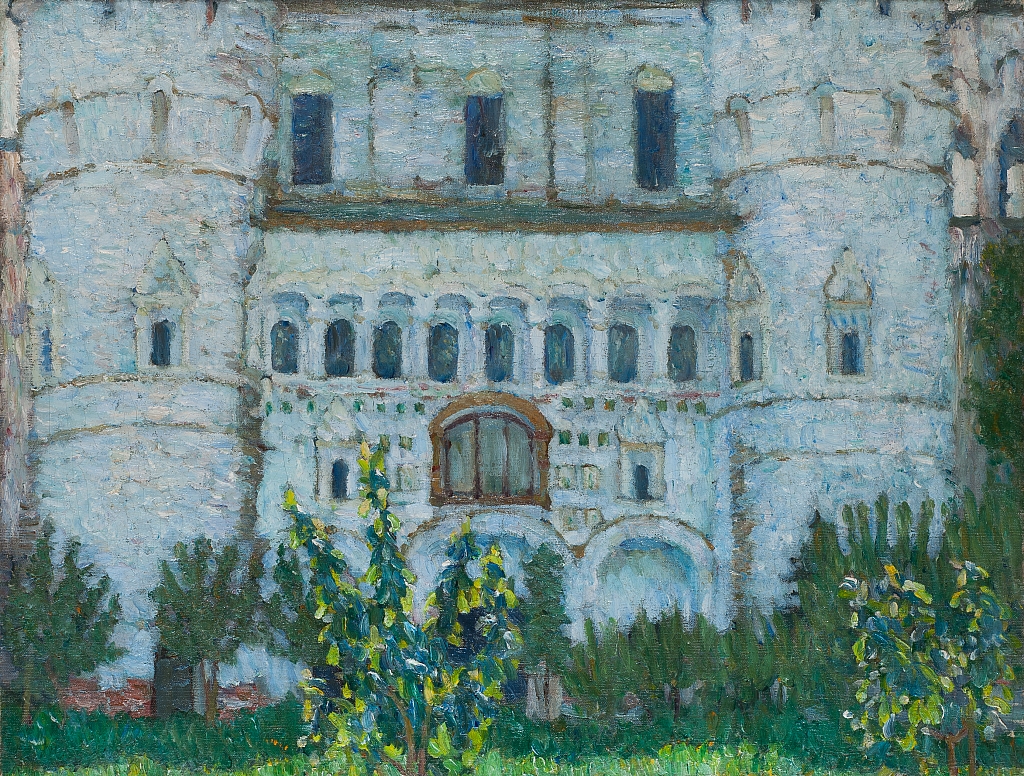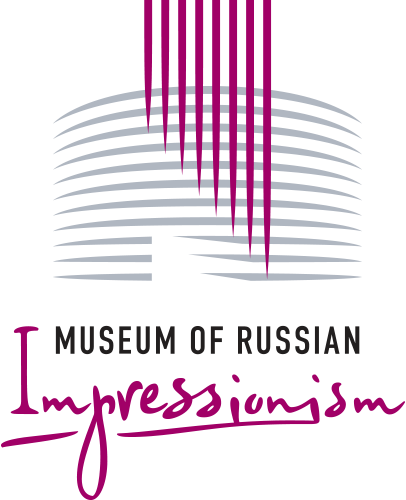
Konstantin Yuon wrote from Rostov: "Everything feels good now. It's Sunday; the sun is shining with plenty of light, brightly; the church bells are ringing, I love it so much.” The Old Russian cities – like Sergiev Posad, Novgorod, Uglich and Torzhok – had always created for Yuon “a mood and desire to create." It should be remembered that Konstantin Yuon was passionate about the Impressionists only at the beginning of his creative career. Later, in the Soviet period, the artist refused to have anything to do with that artistic direction, saying that he would not yield any more to alien "temptations," that he was deeply outraged by the thoughtless 'vulgarizers' of the French artistic movement, who managed “to see on the Volga river the same pink soil which Gauguin had painted in Tahiti.” The painting “The gate of the Rostov Kremlin” was made in 1906, when the Impressionist technique still appealed to the artist. "The names of Monet, Manet, Renoir, Sisley, Degas, Gauguin, Cézanne, and Van Gogh were very popular at that time. I really loved their painting, it struck me for its unusual freshness and novelty of technique. It revealed rich and new colouristics, varieties of shades, the utmost tone saturation, and luminosity," the artist would remember. Look how deftly the artist retained the immediate sense of the object, and the density of stroke. These characteristics in his painting are not accidental. After all, Yuon had been profoundly engaged by ancient architecture from an early age, so seeking inspiration from monumental old Russian memorials was natural.



